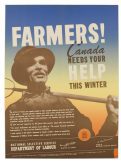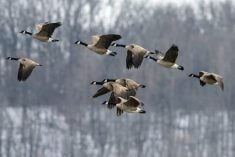Updated: 3:20 p.m. Thursday June 27 CST
A trio of weather events combined to create the worst natural disaster in Alberta history, said an Environment Canada meteorologist.
Bill McMurtry said the combination of the magnitude and location of the rain, the intensity of the rain and the precipitation falling as rain, even high in the mountains created the flooding.
“A lot of rain fell very quickly,” McMurtry during a media briefing on the weather event.
The weather system moved in slowly from the Pacific and stalled near the Alberta, British Columbia and Montana border where it stayed for a couple days. That is not unusual and it is very common to get significant precipitation because of a stuck pressure system, he said.
Read Also

Women who fed a nation
More than 40,000 young women supported the war effort between the 1940s and early 1950s, helping grow and harvest crops amid labour shortages. They were called Farmerettes.
“This particular weather system produced a significant amount of precipitation.”
A number of weather stations recorded rainfall amounts of between 75 and 150 mm while a few others were in excess of 200 mm over a 48 hour period, said McMurtry.
McMurtry elaborated on the key weather events as follows:
– The magnitude and location of precipitation: While this weather system was large and affected a significant portion of southern Alberta, the area of greatest precipitation covered the Bow River watershed.
– The intensity of rainfall: Typically during long rainfall, rates of 3-5mm per hour are considered fairly high. During this storm some rates were measured at 10, 15 and in some cases 20mm per hour for an extended period of time.
– The height of the freezing level: The freezing level is the height in the atmosphere where the temperature is 0 C. Generally the air mass above is colder than 0 C and any precipitation falls as snow and the air mass below is warmer than 0 C and falls as rain. During this event, the freezing levels were 9,000 to 10,000 feet above sea level and all the moisture, including in the mountains, fell as rain.
Evan Friesenhan, manager of river forecasting with Alberta Environment and Sustainable Resource Development said forecasting the river flow was difficult because the rain fell very hard and very quickly.
“We had more water going into the river course much more quickly because the rain is falling so much faster than typical,” he said.
Between June 19 and 22 in an area west of High River, one weather station recorded 325 mm of rain.
“That’s a lot of water all flowing by that community. It was devastation. That’s a lot of rain for that area to handle,” he said.
“The rainfall was very significant and in certain locations unprecedented.”
Friesenhan said 20 rain gauges washed away in the storm.
“They were not just malfunctioning, but gone, completely washed away, the shaft everything.”















